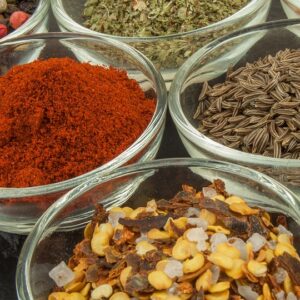Never before has a U.S. president employed tariffs as President Trump has. Indeed, the president’s seemingly endless tariff announcements routinely incense those who want U.S. trade policy to return to “normal.” Having had four years to prepare for a second term, Trump immediately put his tariff plans into motion with the force of a sledgehammer and, just as important, the precision of a scalpel.
The administration is employing tariffs in unprecedented ways — the sledgehammer — to incentivize our trading partners to lower their tariff and non-tariff trade barriers. Though controversial, the administration’s trade strategy is producing tangible results. America’s trading partners are suddenly and uncharacteristically agreeing to negotiate and accede to U.S. wishes on matters that were once considered non-negotiable.
The administration understands that imposing a high tariff on a foreign product that cannot possibly be produced in the United States does nothing but raise costs on Americans.
As Commerce Secretary Howard Lutnick testified in June, “In our trade deals, our expectation is for unavailable natural resources — a banana, other spices and the roots, the things you’ve suggested — your expectation should be (that) there will not be a tariff.” This is the scalpel.
Consider the spice industry that Lutnick mentioned. American consumers have access to a dizzying array of spices. One source identifies 109 spices integral to America’s $1.2 trillion food service industry. However, many spices require a tropical environment to thrive and cannot be grown domestically in commercial quantities.
Consequently, the United States imported more than $2 billion of spices last year from more than 50 countries. Those imports, along with domestically produced spices, directly support 50,000 U.S. jobs and indirectly support many times that figure.
Ken Blackwell, Ohio’s former secretary of state, elaborated in a recent opinion piece. He wrote, “Crops like black pepper, cinnamon, turmeric and vanilla simply don’t grow in American soil. Black pepper needs tropical humidity. Vanilla orchids require hand pollination and narrow temperature ranges. Cinnamon trees can’t survive our winters. This is agricultural reality, not economic or political theory. … If a product can’t be grown here, it shouldn’t be taxed as if it could.”
Not to be overlooked, the administration’s willingness to provide a tariff carve-out for imported spices also supports its Make America Healthy Again agenda. As has been pointed out elsewhere, “Spices do more than just tantalize taste buds. They have unique chemical compounds that offer various health benefits and culinary uses.”
Robert Kennedy Jr., the secretary of the Department of Health and Human Services, declared earlier this year, “Food is medicine.” By that, he meant we must produce nutritious food free of artificial dyes and other contaminants if we are to address our country’s chronic disease crisis. Spices will inevitably play a significant role in achieving that.
Spices encourage vegetable consumption while reducing the consumption of sodium, sugar, fat and calories. Specifically, the capsaicin in chili peppers has been found to boost metabolism, ginger can help improve digestion, and cinnamon can reduce blood sugar levels and help people with diabetes. Then there’s nutmeg. Nutmeg’s abundance of antioxidants helps to lower inflammation, enhances digestive health and promotes heart health.
Many of the remaining 105 spices provide a variety of well-documented health benefits.
With increasing frequency, the administration announces another trade deal and another victory for the American people. The administration recently announced major new trade deals with Japan, the Philippines, Indonesia and the European Union. Trump’s trade strategy is working.
Fortunately, that strategy generally includes tariff exemptions for products, including certain spices, that cannot be produced in the United States. Our economy, our health, and our tasty meals depend on keeping those spices largely tariff-free.


